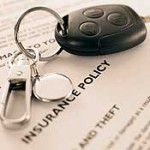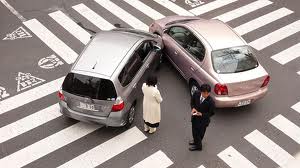 Whether you’re seeking insurance for a car, truck, motorcycle or any other vehicle, you are going to pay depending on variables, some of which you control of some of which are out of your hands. For example: your marital status, age, driving record, and even what type of automobile you’re trying to insure will determine your overall premium costs.
Whether you’re seeking insurance for a car, truck, motorcycle or any other vehicle, you are going to pay depending on variables, some of which you control of some of which are out of your hands. For example: your marital status, age, driving record, and even what type of automobile you’re trying to insure will determine your overall premium costs.
Knowing that external factors are going to play a large role in the insurance pricing, much more than the insurance company itself, it is always best to plan around the price. In other words, you should be taking steps to drop your insurance rates.
In this article, we’ll cover five sensible tips you can use to bring down your insurance costs.
The Top Five Tips for Insurance Buyers
1: Understand what’s covered
Yes, your insurance is going to pay to have your car fixed if a meteor drops out of the sky and tears a hole through your hood. But what else is your insurance covering? By knowing exactly what your insurance is “insuring,” you will know what you need and what you could do without, thus saving you some money.
Here is what most insurance packages are going to cover:
- Property Damage Liability: This type of coverage takes care of the property that your automobile damages. It is required in most states, due to the fact that it is in place to protect the other driver/party involved in any accident.
- Bodily Injury Liability: Any claims of death, injury or any legal costs accrued because an accident you cause are covered by body injury liability.
- Uninsured Motorist Protection: Any uninsured, under-insured or hit-or-run driver that causes and accident and subsequent harm to you and/or your passengers have no way of paying you, obviously, so your insurance foots the bill for these damages.
- Medical Payments: This type of coverage pays for injuries and medical care for you and those in the automobile at the time of the accident. This type of insurance coverage is usually optional.
- Comprehensive: Comprehensive coverage, the type that carries a deductible, is the insurance paying for the aforementioned meteor. Any damage caused from theft, flood, fire, wind, vandalism, etc, will be covered.
- Collision Coverage: Another type of insurance coverage that carries a deductible, collision coverage protects your automobile up to its book value.
2: Understand Your Vehicle
The type of car or truck you’re driving is definitely going to affect the bottom line. So while you may want to drive a Corvette or a Range Rover, you should know that you are undoubtedly going to pay more to have this type of vehicle insured.
Part of your insurance premium is based on the price of the automobile. Why? It has to do with the price it costs to have a part replaced. If you’re driving a Lamborghini and need a new door, that part is obviously going to cost the insurance company more than a door for a Ford Tempo, and thus you will have to pay a higher premium.
Most insurance companies set rates based on their own experiences. If they are receiving a high percentage of claims on any make or model, whether it’s an injury claim or a theft claim, they will start pricing their insurance higher for that particular type of vehicle, since, at least in their eyes, the statistical probability that they will be on the hook for money is higher.
Make sure to do a little bit of research with your insurance company and find out which vehicles are considered a lower risk.
 3: Understand “Who” you are as a Driver
3: Understand “Who” you are as a Driver
As we touched on previously, many factors about who you are will either drive up your insurance rates or help to provide some pricing relief. Your age, driving record, gender, marital status, number of cars owned, previous policies, etc – it’s all on record and all working either with or against you.
Statistically, single males under 25 years of age are involved in more accidents than older and married men and any women. Now, of course, no one is suggesting you lie on your application about your marital status, but you should be surfing companies to find out which insurers on the market are not going to hold your age and status against you in the form of high premiums.
Likewise with traffic violations – the more you accrue over your driving life, the more likely you are to pay a higher premium price. Drivers with no tickets and no accidents always pay the lowest rates, so be sure that you’re driving safely at all times.
Another factor potentially driving up your insurance premium is where you live. Urban areas with high auto-theft rates will surely stand out as danger zones to insurers. A state like New Jersey, where an automobile is more likely to be stolen, has auto insurance rates almost twice as high as North Dakota, a state where auto-theft rates are relatively low.
The trick here is to find out which companies are willing to overlookâ€â€Âor at least not look as hard atâ€â€Âwhere you live. Auto insurance companies compete nationwide, so the options are certainly out there.
4: Understand the Coverage you need
Not only is it dangerous to drive uninsured, but it is also illegal. So choosing not to have insurance in order to simply save money is a recipe for disaster. However, you can be over-insured, and there is just no reason to have every conceivable type of coverage.
Before we get into where you can cut, though, let’s speak about where you should really make sure you’re covered well. Depending on the laws in your particular state, you are going to need roughly around $15k in liability coverage per person and $30k per accident, along with $5k in property damage. Some states require more, some may require less. What you need to do is stay away from the minimum.
If you ever hit an expensive car or cause someone some serious damage, you will regret cutting back your liability to save money.
All insurance rates vary from state to state, sometimes drastically, so it all depends on what your particular state demands of you. But there are areas where you can cut back.
Example: If you are only insuring your vehicle for work use, live in a rural area and do not use your vehicle that often, or any other scenario that applies to you, you can always tweak the comprehensive and collision options, playing around with your deductible until you drive your rate down.
Beyond that, it is imperative that you receive insurance in accordance with state law. If your state requires you have X, make sure that’s what you get.
5: Understand that you have Bargaining Chips
As we touched on in the tip above this, you can do certain things to bring down your overall price. Likewise with the automobile you drive, you can pay less depending on what you own. It is essential that you ask your insurer about the costs before you make a decision to drive. “What” you’re going to drive should be decided after your insurance, unless you want to pay higher rates month after month.
Let’s go over a few ways you can save money on your auto insurance.
- Check the insurer out for discounts. Like with the complicated tax code, you may be entitled to some handsome savings, but you will have to look for them. Things like attaching an anti-theft device to your car or being a “safe” driver for a year can bring your rates down.
- Pay attention to your mileage. If you’re driving fewer than 7,500 miles per year, you may be entitled to some healthy savings via your insurer.
- Increase your deductibles. By agreeing to pay more in a deductible rate, you should be able to drop down the cost of your premium by around 30%. Over the course of your insurance, those are huge savings.
- Make your insurance a family affair. Talk to your agent and go over the driving performance of everyone on your insurance. Multiple safe drivers will certainly bring in bigger discounts. You won’t save a whole lot, but any savings are good savings.
- Drop some coverage options for older, less valuable automobiles. If you’re driving an old clunker with a low book value, there is no reason to have collision coverage.
- Do not be quick to renew. Some insurance companies will offer a few percentage points in savings for renewals, but that’s only to keep your business and to keep you away from the competition. Be sure to check out other insurers when your policy runs out. You might find some better savings.
- Get rid of the extras. Paying for road-side assistance and towing costs and the like are going to drive your premium prices up. Only pick up these options if you really need them. Tow trucks and ambulances are available regardless of your insurance.
- Share instead of own. If you have kids old enough to drive, let them share your car instead of owning a car. This is going to save some money on your monthly premiums.
- Work on your overall credit score. As insurance companies are looking to profit in this economic climate, some are looking hard at credit scores. Drivers with good credit can save money.
Overall, it is important that you shop around and ask questions about potential savings. The sad fact is that most insurance companies want you to pay more, so you will have to look for the savings and work toward driving your premiums down.





